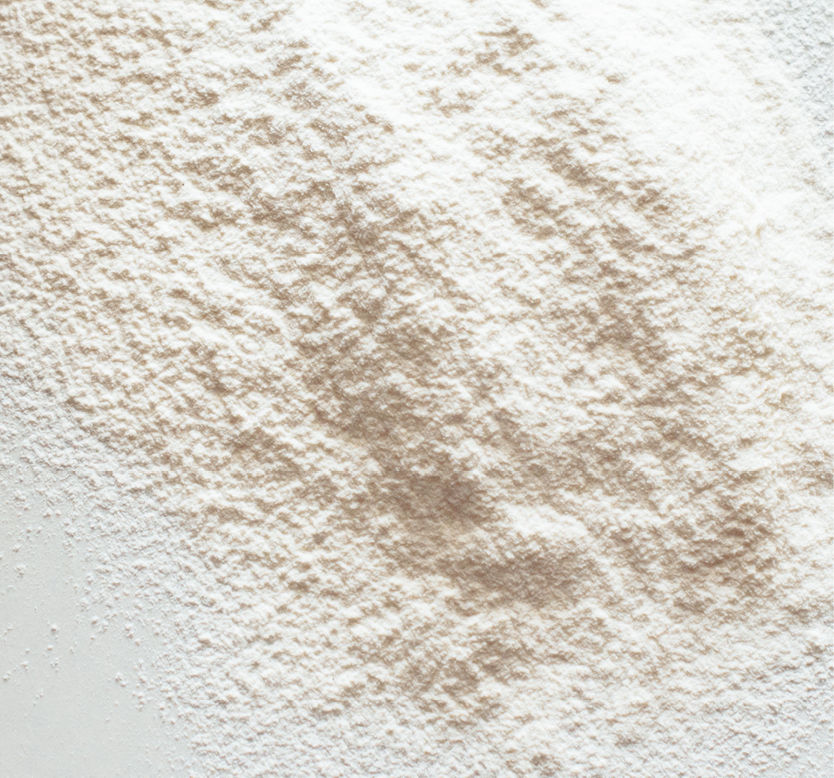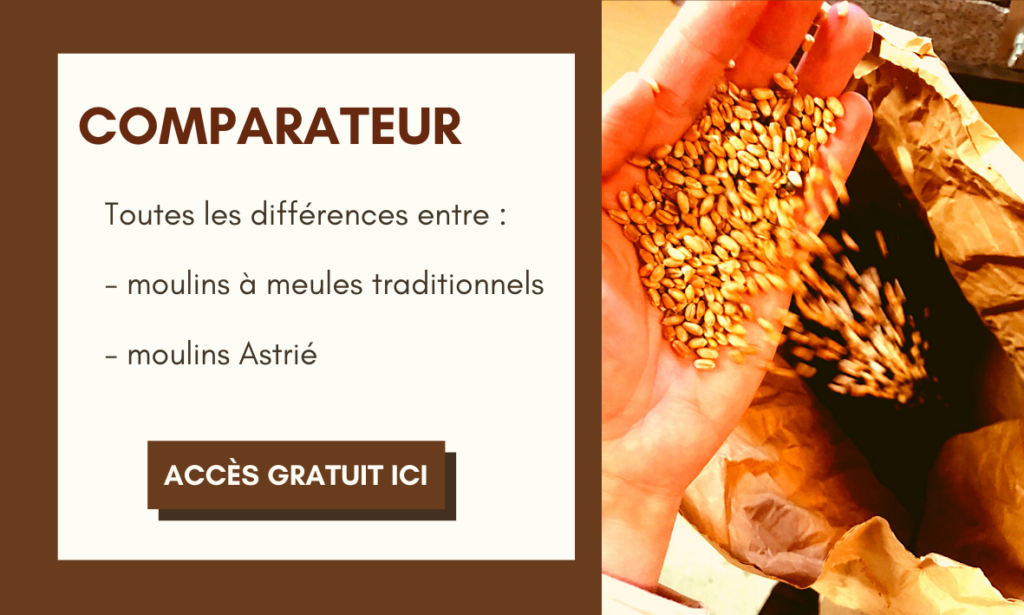You’re a cereal farmer and you want to take the processing of your cereals into flour into your own hands. If you want to add value to your farm, stand out from the crowd and become completely self-sufficient, flour production is a very interesting and profitable strategy. But if you want to stand out from the competition, it’s time to focus on quality. Are you looking for a used farm flour mill that will help you create healthy, digestible flour? Here are 3 things you need to know before buying your professional flour mill!

Define your challenges before you buy
Before you start choosing the farm flour mill that will help you develop your business, you need to take stock of the objectives and challenges it will have to meet:
- What level of output do you need: 15 kilos of flour per hour? 30 kilos of flour per hour? The size of the grinding stones on your second-hand flour mill will depend on this objective.
- What budget do you have for your second-hand flour mill?
- What type of flour do you want to produce: wholemeal flour? Refined white flour?

When it comes to creating quality flour, not all second-hand flour mills are created equal
On the market for used agricultural flour mills, you can choose between several types of product:
- Roller mills: the grain passes between the rollers and is ground. The husk of the grain is then removed, and you obtain a white, totally refined flour. The problem is that it is in the husk of the wheat that the protein base is located, where the vitamins and minerals are preserved. This is why white flour is not easily digestible and has no health benefits for consumers;
- Traditional stone mills: the wheat is crushed between the millstones, and it takes several successive passes to achieve an extraction rate of 80%. This heats up the grain and reduces its nutritional value;
- Les moulins de type Astrié : en un seul passage, on extrait la totalité de l’amande, du germe et de l’assise protéique du grain. La farine n’est pas oxydée, pas échauffée. Votre mouture est particulièrement qualitative, et donne naissance à des farines bises, semi-complètes et complètes type T80, T110, ou encore T130.
- Astrié type mills: in a single pass, all the kernel, germ and protein base of the grain are extracted. The flour is not oxidised or heated. Your milling is particularly high quality, and gives rise to unbleached, semi-complete and complete flours such as T80, T110 and T130.

So be careful: to meet the quality requirements you set out above, you need to choose your second-hand agricultural flour mill carefully. You need to know all the advantages and disadvantages of each of the mills available on the market, and be aware that not all of them will offer you the same level of milling quality!
The Astrié mill: a long-term investment to make your business profitable
The flour obtained from the Astrié mill is :
- Non-oxidised
- Rich in vitamins, fibre, protein and minerals
- Reflects the terroir of the wheat you have grown
- Rich in flavour
- Digestible: the husk of the wheat kernel is sanded to extract the cells from the protein base and incorporate them into the flour. It is these cells that contain the enzymes that enable the starch to be hydrolysed, making the flour digestible and healthy.
Do you want to put quality and taste at the heart of your business? Then this is the mill for you!
And you’ll be surprised to learn that today, a second-hand Astrié flour mill is more expensive than a new Astrié mill! And why is that? The delay.
With a second-hand mill, there’s no delay: it’s already made, so all you have to do is go to the seller to take your Astrié mill and start producing flour.

On the other hand, to make an authentic Astrié mill, you need to be patient, because the techniques that your maker needs to master are numerous: you need to know how to work wood, stone and metal all by hand. Since this is a very rare skill, lead times are long!
What’s more, looking for a second-hand Astrié mill that’s already in production means running the risk of opting for a mill that won’t meet your needs, but rather those for which the mill was made. The size of the grinding wheel, the extraction and bagging options, the addition of an extra sieve, the use of a sieve box or a transparent arch: all these features depend on your own needs in terms of output and your project.
What’s more, your mill will depend on the type of cereal you want to process, or whether you want to make gluten-free flour… So your choice of mill is closely linked to your personal project. So opting for an existing second-hand flour mill is not always the best choice… Would you like to talk to us about your project? Contact us now!



